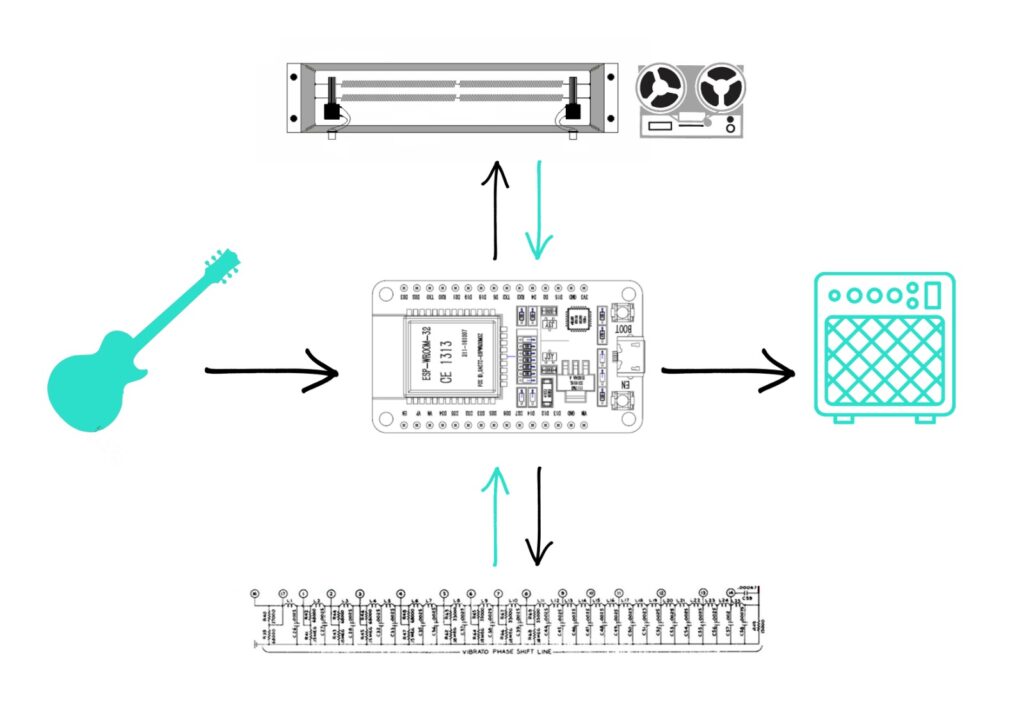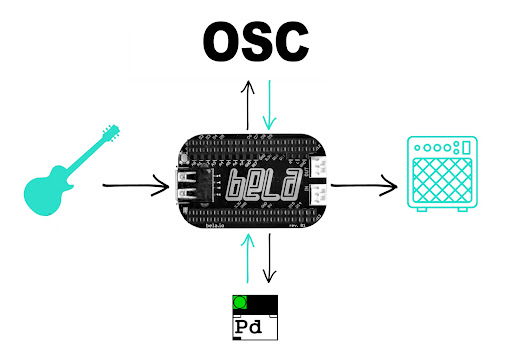Initially, I proposed the development of an analog multi-effects chain unit that combines different types of vintage audio components with the capabilities of modern microcontrollers. The core element of this device would have been an analog delay line which, when sampled in different sequences, produces different modulation effects. The unit could be expanded with additional analog modules such as spring reverbs and tape delays daisy-chained in interchangeable order and controlled by the same central ESP32 microcontroller. The user interface would be divided between a minimalist control panel on the device and a mobile app that allows for detailed parameter settings.

Due to difficulties in designing an analog circuit that could sample the delay line, I decided to take my project to the digital domain and create a digital multi-effects chain instead. After gaining extensive experience with Pure Data and the Bela Board in the first part of this semester, I decided to use these technologies for the project. The main plan remained essentially the same as proposed in the first semester, only the hardware had been replaced.
My new plan is to establish a community-oriented product by incorporating various open-source technologies. I propose the development of a digital multi-effect unit that combines the flexibility of Pure Data with the ultra-low latency of Bela and the integrability of the open sound control protocol. The core element of the effect chain is a delay line that produces different modulation effects. By design, the unit can be expanded with additional effect modules that are controlled by the same open sound control interface.
